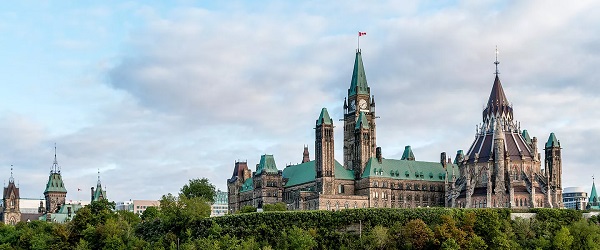Frontier Centre for Public Policy
Canada’s elites suppress freedom of speech on indigenous matters
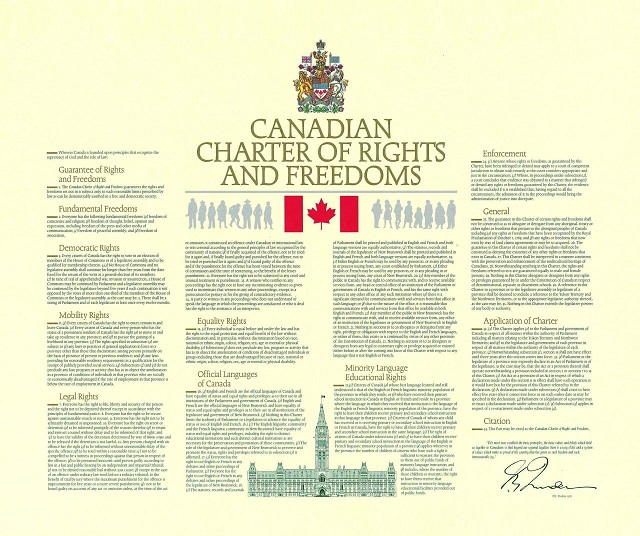
From the Frontier Centre for Public Policy
By Peter Best
Under section 2 of the Charter of Rights and Freedoms, Canadians are guaranteed freedom of thought, belief, and expression. These freedoms are fundamental in our democratic society. In fact, an official government commentary on the Charter states: “In a democracy, people must be free to discuss matters of public policy, criticize governments and offer their own solutions to social problems.”
Given this claim, it is, indeed, a mystery why free speech is protected when people say that Israel’s policies and practices towards the Palestinians are “racist,” but not when they say that Canada’s policies and practices towards Indigenous peoples are “racist.”
When it comes to Indigenous issues, our academic, media, and political elites have a Charter of Rights free speech blind spot. They refuse to allow contrary minded, but enlightened Nelson Mandela-like beliefs to be voiced unless those people want to be labeled as “racist.” Only a few brave souls have been willing to be pillarized by transgressing this “sacred” boundary.
This writer went over this line when he arranged a Chapters book-signing for There Is No Difference, a book that advocates for the greater integration of Indigenous people into Canadian society, only to have the event cancelled by the bookstore who chose silence over free speech. Surprisingly, only one mainstream journalist, Barbara Kay in The National Post, defended my free speech rights.
But I am not alone.
A few years ago, Senator Lynn Beyak dared to say that some good came from residential schools, a view that is, in fact, reflected in the Truth and Reconciliation (TRC) Report, and was shared by eminent Indigenous author and residential school student Basil Johnston in his book, Indian School Days.
For making defensible assertions, Senator Beyak was excoriated by politicians from all parties, and mocked by editorial writers as an ignorant rube. In 2019, she was kicked out of the Conservative caucus, and shortly after she resigned from the Senate.
Associate Professor Frances Widdowson was exercising her “academic freedom,” but, nevertheless, was fired from Mount Royal University in 2021 for challenging the Indigenous status quo. In doing so, the university proved that its core mission was to protect the feelings of Indigenous people and not to challenge fallacies and uphold truth-seeking in a free and open debate.
The same year, an Abbotsford B.C. high school teacher, Jim McMurtry, was fired for saying that most Indigenous children who died in residential schools died because of diseases like influenza and tuberculosis. Even though this fact is reported in the TRC Report, it did not save Mr. McMurtry from unceremonially losing his teaching career.
In 2024, the mayor of Quesnel B.C., Ron Paull, was censured and the nearby First Nations bands boycoted him because his wife — a private citizen in her own right — handed out copies of Grave Error to friends and acquaintances. This book is a scholarly challenge to the “cultural genocide” claimed by the Kamloops Indigenous band.
Also, in 2024, a Manitoba school trustee, Paul Coffey, faced pressure to resign for publicly echoing what Senator Beyak had said a few years earlier.
These cases — and many others — clearly illustrate that no government official, no member of a provincial or territorial legislature, and few mainstream academics and journalists will defend contrary-minded “heretics” exercising their right to free speech, a right that is enshrined in the Canadian Charter of Rights and Freedoms.
In fact, few mainstream news media outlets reported on these stories in a dispassionate and professional way. The CBC, for example, consistently emphasizes the “hurt feelings of the aggrieved,” making their outrage the focus of their reporting. In no media reports has the CBC mentioned the Charter of Rights and Freedoms, implying that Charter protected freedom of speech is no longer relevant in their reporting on Indigenous matters.
Hurt feelings, of course, are irrelevant to academics and journalists because the search for truth always involves controversies that hurt the feelings of some people.
Even more outrageous, the federal government has actively demonized Canadians who challenge misinformation about Indigenous people by proposing to make it a crime for people to engage in what it calls “residential school denialism.” As a result, people who care about the best interests of Indigenous peoples but have contrary-minded views, are afraid to speak up for fear of being called “denialists,” as if they were denying the European Holocaust.
Nevertheless, many Canadians believe that the proper way to advance reconciliation with Indigenous people is to phase out the dependency relationship that has grown since the Indian Act was enacted in 1876. Many also think that Indigenous peoples should be equal with other Canadians—no better, and certainly no worse.
Some Canadians even believe that Canadian governments should not support the United Nations Declaration on the Rights of Indigenous People (UNDRIP) that creates a strong “consult and accommodate” hammerlock on the development of Canadian resources. Similarly, many believe that the “nation to nation” relationship is polarizing citizens leading to ruinous economic and social policies for both Indigenous bands and Canadian society.
Unfortunately, the vast majority of Canadians realize that it is best to keep thoughts like these ones to themselves.
Our elites have breached their fiduciary responsibilities to Canadians. It is a tragedy that they do not encourage other viewpoints. In this respect, Peter Wehner correctly says: “The truths to be discovered are complex and many-sided, and the only way to get to them is by engaging with contrary ideas in a manner approaching dialogue.”
It would be in the best interest of Canadians, if our elites shed their hostility towards those who disagree with them. But to do this, they need to develop the confidence and open-mindedness that the French philosopher Montaigne implied when he wrote: “When I am contradicted it arouses my attention, not my wrath. I move towards the man who contradicts me; he is instructing me. The cause of truth ought to be common to both of us.”
But in discussing Canadian Indigenous issues, the Canadian elites are inexplicably unwilling to grant to others the same Charter of Rights-free speech presumptions that they keep for themselves when they support “anti-Zionists” shouting obnoxious statements and insults. When they do this, they are dividing Canadians, losing our trust, and increasing the grave harm to all Canadians but especially to Indigenous Canadians.
Peter Best is a retired lawyer in Sudbury and the author of There is no Difference which argues that Canada’s laws should be changed to make all Canadians equal under the law, regardless of race.
Bjorn Lomborg
The Physics Behind The Spanish Blackout
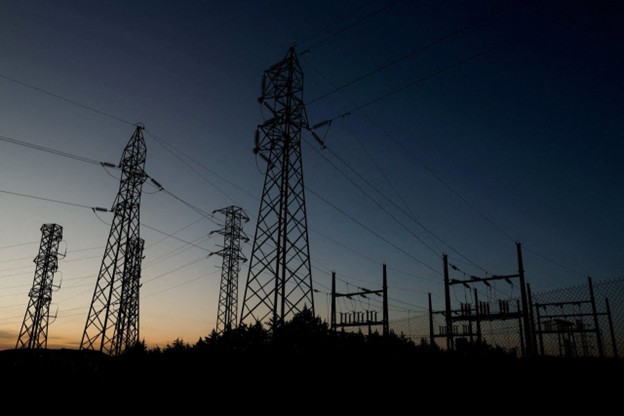
From the Frontier Centre for Public Policy
Madrid knew solar and wind power were unreliable but pressed ahead anyway
When a grid failure plunged 55 million people in Spain and Portugal into darkness at the end of April, it should have been a wake-up call on green energy. Climate activists promised that solar and wind power were the future of cheap, dependable electricity. The massive half-day blackout shows otherwise. The nature of solar and wind generation makes grids that rely on them more prone to collapse—an issue that’s particularly expensive to ameliorate.
As I wrote in these pages in January, the data have long shown that environmentalists’ vision of cheap, reliable solar and wind energy was a mirage. The International Energy Agency’s latest cost data continue to underscore this: Consumers and businesses in countries with almost no solar and wind on average paid 11 U.S. cents for a kilowatt hour of electricity in 2023, but costs rise by more than 4 cents for every 10% increase in the portion of a nation’s power generation that’s covered by solar and wind. Green countries such as Germany pay 34 cents, more than 2.5 times the average U.S. rate and nearly four times China’s.
Prices are high in no small part because solar and wind require a duplicate backup energy system, often fossil-fuel driven, for when the sun doesn’t shine or the wind doesn’t blow. The Iberian blackout shows that the reliability issues and costs of solar and wind are worse than even this sort of data indicates.
Grids need to stay on a very stable frequency—generally 50 Hertz in Europe—or else you get blackouts. Fossil-fuel, hydro and nuclear generation all solve this problem naturally because they generate energy by powering massive spinning turbines. The inertia of these heavy rotating masses resists changes in speed and hence frequency, so that when sudden demand swings would otherwise drop or hike grid frequency, the turbines work as immense buffers. But wind and solar don’t power such heavy turbines to generate energy. It’s possible to make up for this with cutting-edge technology such as advanced inverters or synthetic inertia. But many solar and wind farms haven’t undergone these expensive upgrades. If a grid dominated by those two power sources gets off frequency, a blackout is more likely than in a system that relies on other energy sources.
Spain has been forcing its grid to rely more on unstable renewables. The country has pursued an aggressive green policy, including a commitment it adopted in 2021 to achieve “net zero” emissions by 2050. The share of solar and wind as a source of Spain’s electricity production went from less than 23% in 2015 to more than 43% last year. The government wants its total share of renewables to hit 81% in the next five years—even as it’s phasing out nuclear generation.
Just a week prior to the blackout, Spain bragged that for the first time, renewables delivered 100% of its electricity, though only for a period of minutes around 11:15 a.m. When it collapsed, the Iberian grid was powered by 74% renewable energy, with 55% coming from solar. It went down under the bright noon sun. When the Iberian grid frequency started faltering on April 28, the grid’s high proportion of solar and wind generation couldn’t stabilize it. This isn’t speculation; it’s physics. As the electricity supply across Spain collapsed, Portugal was pulled along, because the two countries are tightly interconnected through the Iberian electricity network.
Madrid had been warned. The parent company of Spain’s grid operator admitted in February: “The high penetration of renewable generation without the necessary technical capabilities in place to keep them operating properly in the event of a disturbance . . . can cause power generation outages, which could be severe.”
Yet the Spanish government is still in denial. Even while admitting that he didn’t know the April blackout’s cause, Prime Minister Pedro Sánchez insisted that there was “no empirical evidence” that renewables were to blame and that Spain is “not going to deviate a single millimeter” from its green energy ambitions.
Unless the country—and its neighbors—are comfortable with an increased risk of blackouts, this will require expensive upgrades. A new Reuters report written with an eye to the Iberian blackout finds that for Europe as a whole this would cost trillions of dollars in infrastructure updates. It’s possible that European politicians can talk voters into eating that cost. It’ll be impossible for India or nations in Africa to follow suit.
That may be unwelcome news to Mr. Sánchez, but even a prime minister can’t overcome physics. Spain’s commitment to solar and wind is forcing the country onto an unreliable, costly, more black-out-prone system. A common-sense approach would hold off on a sprint for carbon reductions and instead put money toward research into actually reliable, affordable green energy.
Unfortunately for Spain and those countries unlucky enough to be nearby, the Spanish energy system—as one Spanish politician put it—“is being managed with an enormous ideological bias.”
Bjorn Lomborg is president of the Copenhagen Consensus, a visiting fellow at Stanford University’s Hoover Institution and author of “Best Things First.”
Business
BC Ferries And Beijing: A Case Study In Policy Blindness
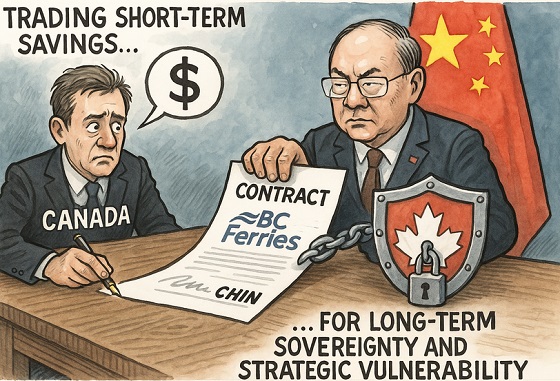
From the Frontier Centre for Public Policy
Scott McGregor warns BC Ferries’ contract with a Chinese state-owned shipbuilder reveals Canada’s failure to align procurement with national security. It is trading short-term savings for long-term sovereignty and strategic vulnerability.
BC Ferries’ recent decision to award the construction of four new vessels to China Merchants Industry (Weihai), a state-owned shipyard under the Chinese Communist Party (CCP), is a cautionary tale of strategic policy failure. While framed as a cost-effective solution to replace aging vessels, the agreement reveals a more critical issue: Canada’s persistent failure to align vital infrastructure procurement with national security and economic resilience.
The situation goes beyond transportation. It is a governance failure at the intersection of trade, security, and sovereignty.
Outsourcing Sovereignty
China Merchants Industry is part of a sprawling state-owned conglomerate, closely connected to the CCP. It is not merely a commercial player; it is a geopolitical actor. In China, these organizations thrive on a unique blend of state subsidies, long-term strategic direction, and complex corporate structures that often operate in the shadows. This combination grants them a significant competitive edge, allowing them to navigate the business landscape with an advantage that many try to replicate but few can match.
The same firms supplying ferries to BC are also building warships for the People’s Liberation Army Navy. That alone should give pause.
Yet BC Ferries, under provincial oversight, proceeded without meaningful scrutiny of these risks. No Canadian shipyards submitted bids due to capacity constraints and a lack of strategic investment. But choosing a Chinese state-owned enterprise by default is not a neutral act. It is the consequence of neglecting industrial policy.
Hybrid Risk, Not Just Hybrid Propulsion
China’s dominance in shipbuilding, now over 60% of global orders, has not occurred by chance. It is the result of state-driven market distortion, designed to entrench foreign dependence on Chinese industrial capacity.
Once that dependency forms, Beijing holds leverage. It can slow parts shipments, withhold technical updates, or retaliate economically in response to diplomatic friction. This is not speculative; it has already happened in sectors such as canola, critical minerals, and telecommunications.
Ordering a ferry, on its face, might seem apolitical. But if the shipbuilder is state-owned, its obligations to the CCP outweigh any commercial contract. That is the nature of hybrid threats to security: they appear benign until they are not.
Hybrid warfare combines conventional military force with non-military tactics (such as cyber attacks, disinformation, economic coercion, and the use of state-owned enterprises) to undermine a target country’s stability, influence decisions, or gain strategic control without resorting to open conflict. It exploits legal grey zones and democratic weaknesses, making threats appear benign until they’ve done lasting damage.
A Policy Void, Not Just a Procurement Gap
Ottawa designed its National Shipbuilding Strategy to rebuild Canadian capability, but it has failed to scale quickly enough. The provinces, including British Columbia, have been left to procure vessels without the tools or frameworks to evaluate foreign strategic risk. Provincial procurement rules treat a state-owned bidder the same as a private one. That is no longer defensible.
Canada must close this gap through deliberate, security-informed policy. Three steps are essential for the task:
Ottawa should mandate National Security reviews for critical infrastructure contracts. Any procurement involving foreign state-owned enterprises must trigger a formal security and economic resilience assessment. This should apply at the federal and provincial levels.
Secondly, when necessary, Canada should enhance its domestic industrial capabilities through strategic investments. Canada cannot claim to be powerless when there are no local bids available. Federal and provincial governments could collaborate to invest in scalable civilian shipbuilding, in addition to military contracts. Otherwise, we risk becoming repeatedly dependent on external sources.
Canada should enhance Crown oversight by implementing intelligence-led risk frameworks. This means that agencies, such as BC Ferries, must develop procurement protocols that are informed by threat intelligence rather than just cost analysis. It also involves incorporating security and foreign interference risk indicators into their Requests for Proposals (RFPs).
The Cost of Strategic Amnesia
The central point here is not only about China; it is primarily about Canada. The country needs more strategic foresight. If we cannot align our economic decisions with our fundamental security posture, we will likely continue to cede control of our critical systems, whether in transportation, healthcare, mining, or telecommunications, to adversarial regimes. That is a textbook vulnerability in the era of hybrid warfare.
BC Ferries may have saved money today. But without urgent policy reform, the long-term cost will be paid in diminished sovereignty, reduced resilience, and an emboldened adversary with one more lever inside our critical infrastructure.
Scott McGregor is a senior security advisor to the Council on Countering Hybrid Warfare and Managing Partner at Close Hold Intelligence Consulting Ltd.
-
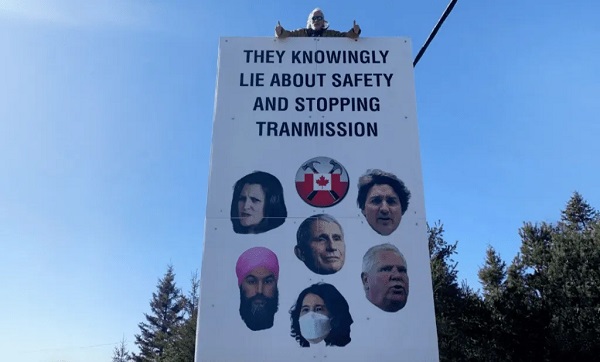
 COVID-192 days ago
COVID-192 days agoOntario man launches new challenge against province’s latest attempt to ban free expression on roadside billboards
-

 Energy2 days ago
Energy2 days agoThis Canada Day, Celebrate Energy Renewal
-

 COVID-1915 hours ago
COVID-1915 hours agoNew Peer-Reviewed Study Affirms COVID Vaccines Reduce Fertility
-
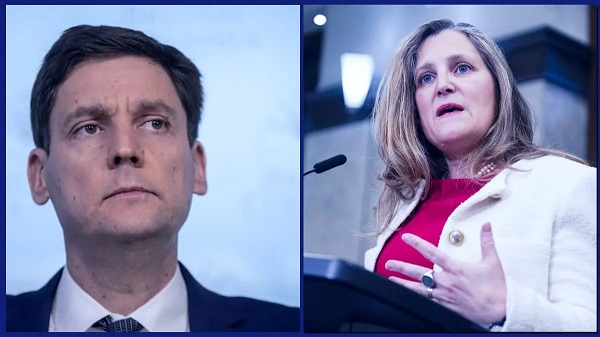
 Business11 hours ago
Business11 hours agoOttawa Funded the China Ferry Deal—Then Pretended to Oppose It
-
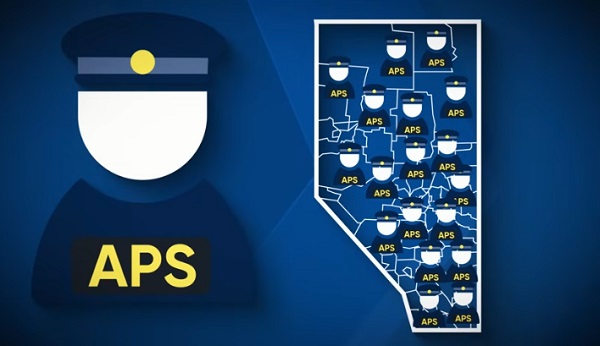
 Alberta1 day ago
Alberta1 day agoAlberta Next Takes A Look At Alberta Provincial Police Force
-
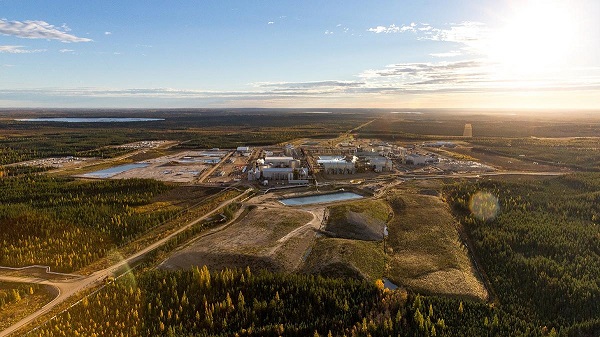
 Alberta2 days ago
Alberta2 days agoCanadian Oil Sands Production Expected to Reach All-time Highs this Year Despite Lower Oil Prices
-

 MAiD13 hours ago
MAiD13 hours agoCanada’s euthanasia regime is not health care, but a death machine for the unwanted
-
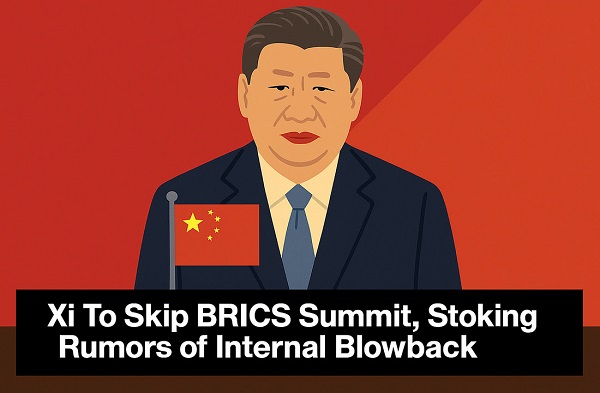
 International2 days ago
International2 days agoPresident Xi Skips Key Summit, Adding Fuel to Ebbing Power Theories




